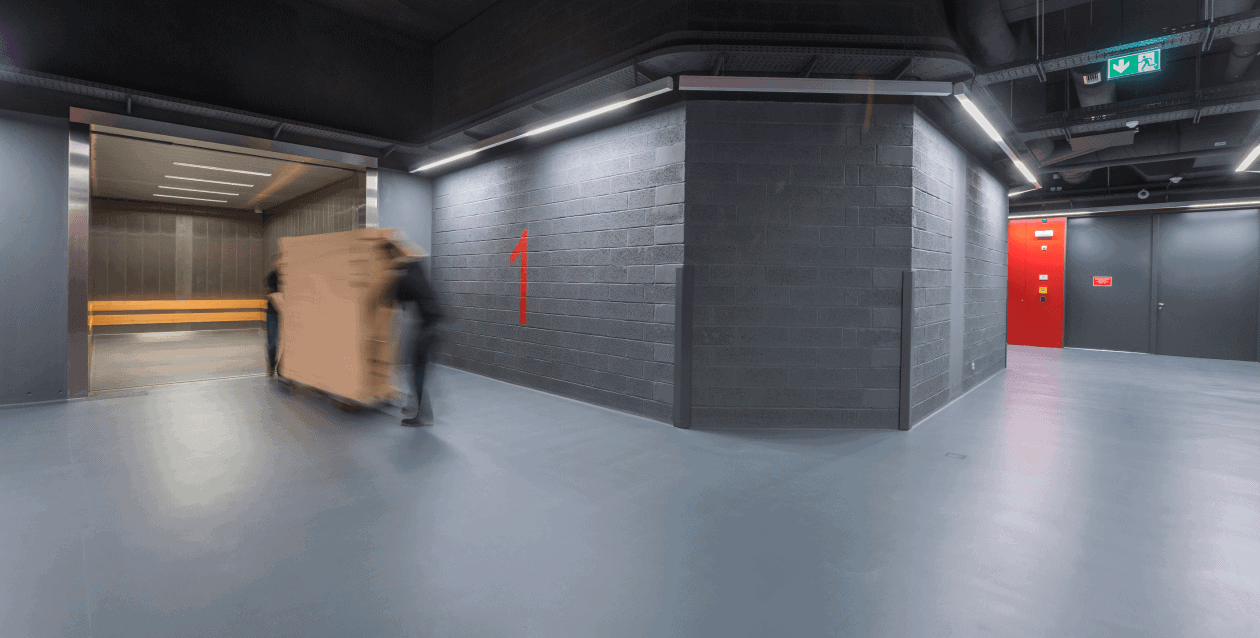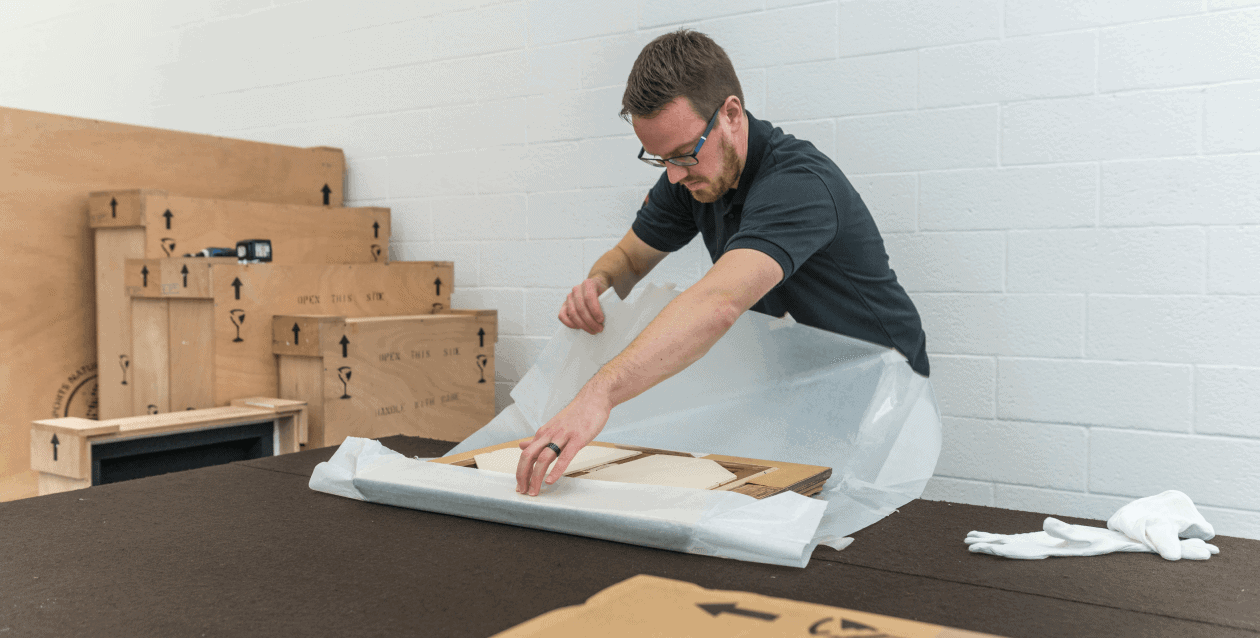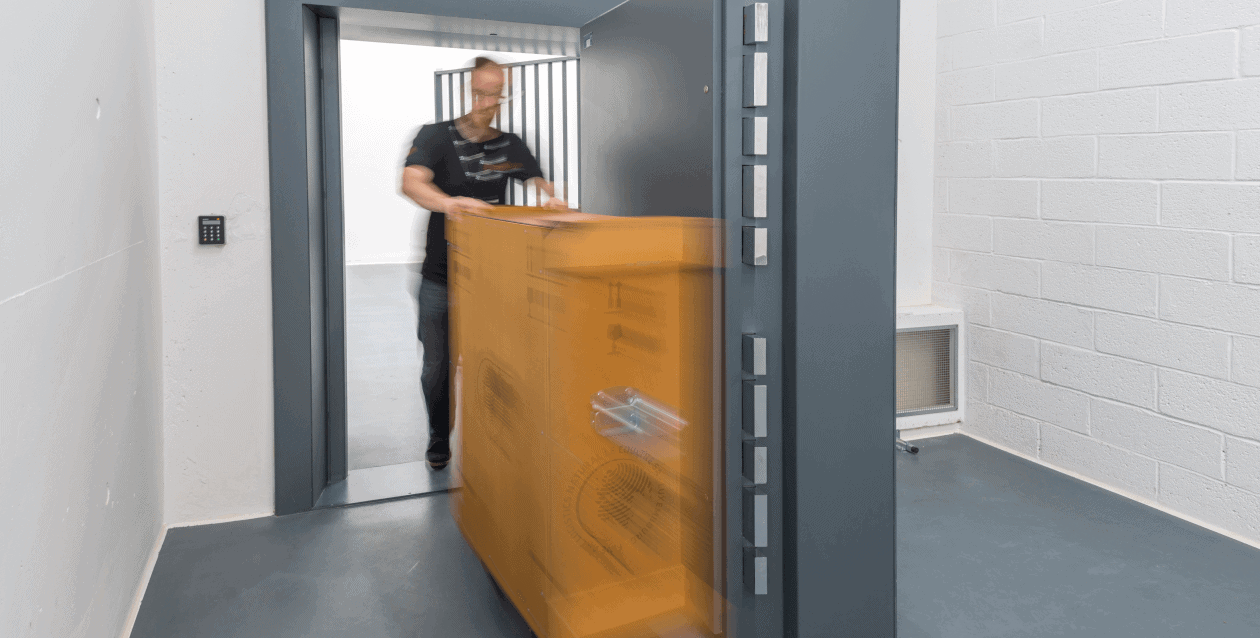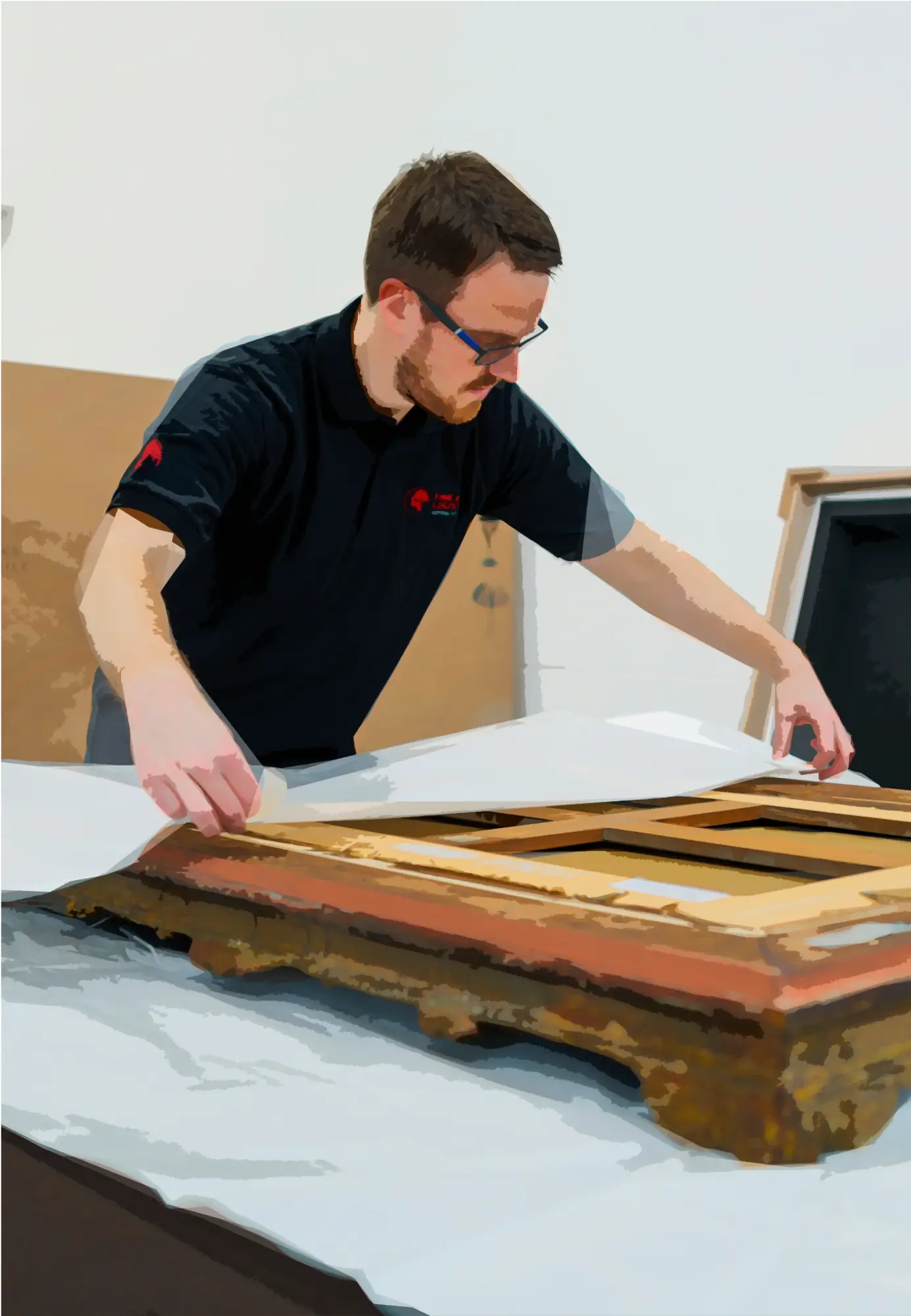The activities of patrons, collectors or investors in art require patience.
It is of course essential to have a certain flair to unearth works of art that have a high potential return on investment or to identify contemporary artists who will become the key figures of tomorrow. However, only time will validate the success of the investment made.
And as with good wines, a work of art needs a strictly controlled environment that will ensure its proper conservation to reveal its potential.
Therefore, turning to a professional fine art storage facility is the best way to preserve your investment in the long run and enjoy total peace of mind.
Points to discuss with your service provider to make the right choice
To help you identify the provider best suited to meet your fine art storage needs, we will detail some discussion points to address in order to make the best choice among the fine art storage solutions that exist.
Determining your “collector” profile to define your needs
The typology of your art collection will play an essential role in determining the size and type of storage you need.
If the pieces in your collection are bigger if you plan to acquire outsize artworks, it is important to ensure that your service provider has rooms with sufficient ceiling height.
Similarly, paintings in oils, watercolours or pastels will require an environmental control specific to each medium.
In the case of an “active” collection to which you wish to have regular access, the storage of your works of art should take advantage of a position that favours regular handling. On the other hand, long-term storage will be satisfied with a less accessible area in the facilities.
Furthermore, if for one reason or another, your collection requires reinforced security, it will be necessary to ensure that you can have a space only dedicated to your pieces of art.
Finally, to be sure that the professional fine art storage warehouse meets all your requirements, we advise you to request a visit of the facilities before committing to renting a storage space.
In addition to your collector profile, the services offered by professionals in this sector of activity and their level of expertise will also influence your choice.
Do your service provider and its teams have established experience?
When entrusting valuable works of art to any service provider, you will only have peace of mind when you can be sure you are dealing with teams who have a proven track record and experience.
You are maybe thinking that the easiest way forward would be to know if any well-known collectors have already chosen the service provider you have shortlisted. Unfortunately, this information will be very difficult to obtain for obvious confidentiality reasons.
You will therefore have to rely on other criteria to assess the know-how of the staff who will manage your collection.
Start by making sure that the establishment has performed adequate background checks on the members of the teams.
You can also ask to learn more about the devices used for tracing works of art. Just as it would be interesting to know more about the tracking system which makes it possible to know the movements of the teams in the building.
Also, be sure to work with staff who master the essential skills of their trade such as:
- The manipulation of works of art according to their typology;
- Customised packaging production;
- The different steps to be carried out to ensure uncomplicated logistics movements.

Finally, confidentiality, support in all aspects of collection management and the availability of teams complete the criteria to be checked to assess the level of services offered.
Specific storage conditions for each type of work
The mediums used by artists to produce their work will inevitably impose specific storage conditions. Therefore, it is essential that your service provider has flexible rooms to offer the best storage conditions for your various masterpieces.
An ideal storage for oil paintings
Among the different types of works, oil paintings require unique conditions to keep the brilliance of the colours from deteriorating.
If moderate conditions in terms of humidity and temperature are sufficient to ensure the integrity of most oil paintings, it is at the level of luminosity that this type of work requires specific precautions.
Indeed, even if the changes are imperceptible to the human eye, prolonged exposure to light will cause a gradual fading of colours over the long term.
As far as packaging is concerned, any direct contact with the work should be avoided. It is even sometimes recommended to cover the canvas with a layer of protective varnish before storing it so that the inevitable dust deposit can be easily removed.
Storing watercolour paintings
Watercolour paintings collections are extremely delicate. Your choice of storage location will be even more demanding.
Indeed, the paper used by the artists is very fragile and the work can be damaged irreversibly if the storage parameters are not scrupulously respected.
Temperature stability control is essential. If it is too high, the deterioration of the paper will accelerate until it becomes brittle, or will even blacken. Temperature fluctuations will, in turn, cause waviness of the paper beyond repair.
It goes without saying that watercolour paintings are very sensitive to humidity. In addition to the deterioration of the paper, a poorly controlled humidity level can cause the appearance of mould stains which will also cause a deterioration of the work which is difficult to recover.
Add to that the effect of direct light which is the sworn enemy of this type of artwork. As far as watercolours are concerned, light accelerates the deterioration of the paper in addition to discolouring the subject. An environment of total darkness is therefore essential for this type of painting.
Finally, the storage area should ensure to keep insects away from the watercolours. The paper used is often composed of cellulose and glue and therefore a real treat for many insects.
Optimal storage for sculptures
Ancient sculptures and statues also require specific conditions that may guide your choice of service provider.
It is worth considering the materials that make up ancient sculptures and statues to determine their specific storage needs. If you need to store sculptures, you will have to consider these three main parameters:
- The storage surface
The more your sculpted pieces are imposing and fragile, the more it is advisable to have a large free space all around the artwork. Use has shown that sculpted works stored in a crowded space run a higher risk of deterioration.
- Adequate equipment
If your collection contains monumental pieces, it will be essential that your service provider has an unloading dock large enough to accommodate your pieces. The availability of the handling equipment necessary to move imposing works in complete safety will also be a parameter to be checked before making your choice.
- Insulation and packaging of works of art
Your service provider must also have the know-how, the equipment and the knowledge of the best practises necessary to carefully package imposing artworks. For example, it is recommended to isolate the sculptures from the ground with felt and to wrap them as carefully as possible in order to prevent dust from accumulating on the work.
- Environmental control
As for the paintings, the temperature and humidity of the storage space dedicated to the sculptures must be strictly controlled to ensure the proper preservation of the precious objects.
Constraints specific to the storage of contemporary works of art
Of all art collections, the most demanding in terms of conservation are contemporary works of art since some of their components are perishable or made from organic material.
An in-depth analysis of these works will be essential to adopt the conservation method that will prevent the alteration of the constituent material of the artwork.
These works of art, which are very sensitive to variations in their storage conditions, require strict and very regular control of parameters such as:
- Humidity
- Temperature
- The brightness rate
- The level of pollutants in the air
- Protection against biological attacks
- Devices that relieve physical stress
Therefore, the conservation and storage of these works of art require that your service provider has:
- Support from experts capable of determining and monitoring storage conditions.
- The possibility of providing a storage space dedicated to the work; taking into account the fact that sometimes these works have monumental dimensions.
- Technological means sensitive enough to trigger alerts in the event of critical changes in storage conditions.
- Teams available 24 hours a day to intervene if an alert was to go off.
- A backup space where the retention settings are identical to the main storage space.
The importance of packaging for good preservation
The know-how of the teams in terms of tailor-made packaging of works of art for long-term storage purposes must also be examined to make the right choice.
First, the teams in charge will have to carry out a meticulous analysis of the work in order to design the packaging that will be perfectly adapted in terms of shapes and materials used.
In addition, it will be important to take into consideration the storage place in the realisation of the artwork’s container.

The requirements for packaging an artwork
The shared objectives of all types of packaging will be to provide the artworks with increased resistance to shocks and temperature variations, but also to reduce atmospheric exchanges between the inside and the outside of the container to a minimum.
When the artist has used one or more elements of natural or organic origin in the production of his work, it will be important to ensure that the packaging is designed to prevent pests and insects from accessing the work.
Thus, depending on the work and its method of storage, experts trained in the packaging of precious objects will make a choice among all the packaging techniques frequently used.
From the softpack to the mounted pallet, including the crate and double-crate, they will choose to add additional insulating materials when these prove to be essential.
The use cases of the artwork will also influence the type of packaging to be applied. A work intended to be exhibited regularly will be packaged in a container that’s easy to remove, while a work that will be stored for a long period will be assigned a permanent type of packaging.
Discretion, security and insurance
As a collector, there is no doubt you will want to be offered solutions with an optimal level of confidentiality and which benefit from a security system based on the latest generation technologies.
In addition to speaking directly to the manager of the storage location, we recommend that you request a site visit.
Do not hesitate to seek the advice of your insurer. If the latter gives you the green light, you can consider that the discretion and security settings meet all the requirements for secure storage.

Location and prevention of natural disasters
A parameter that has long been set aside concerns the assessment of geographical location as it relates to the risk of natural disasters.
In today’s world, it is essential to take this parameter into account before choosing a storage location.
You should ensure that the infrastructures, depending on their location, are able to resist the risks of earthquakes, floods, fires or exposure to extreme temperatures.
Exhibiting your works of art
Does your collection need to be regularly presented during private exhibitions or for pre-sale presentation purposes?

In this case, check if the professional fine art storage warehouses have private exhibition rooms as well as specialised teams for the regular handling and exhibition of high-value works.
The most reassuring thing about regularly moving and hanging your artwork is knowing that you have teams dedicated to your collection.
Logistic movement and transport routes
An “active” collection may also need to be moved in order to participate in exhibitions or private events.
If this is the case for your collector's items, consider evaluating the level of logistics service provided by your service provider. For this, different parameters can help you.
- Does your service provider have privileged access to the various transport routes (Land - sea - air)?
- Are they able to offer you packaging adapted to both the means of transport and the type of artwork to be moved?
- Are you accompanied in the administrative and customs procedures inherent in the movement of valuable works of art?
- Is your service provider able to organise an exceptional transport convoy?
- How responsive are the teams? Are they able to manage an urgent delivery to the place of your choice?
- Has your service provider entered into partnerships with colleagues active in the same field in different strategic locations around the world?

If your service provider ticks all the boxes in terms of transport and logistics, it is well suited to store the “active” works of your collection.
Additional services offered at the storage warehouse of your works of art
For obvious reasons of comfort, it may be useful for you to have additional services for the storage and proper conservation of your art collection available on site.
It is clear that if the slightest intervention on your collection requires travel, not only is your collection subject to the risk of degradation, but in addition, this regular transport will generate costs that could be avoided.
Thus, the additional services most frequently offered at storage sites are:
- Restoration of works of art.
- The production of professional photographs of your collectibles.
- The design of a catalogue listing the works held and their description.
- Custom crating and packaging for storage and transport purposes.
- Administrative and logistical management of transport on a global scale.
- Management of import/export customs formalities.





